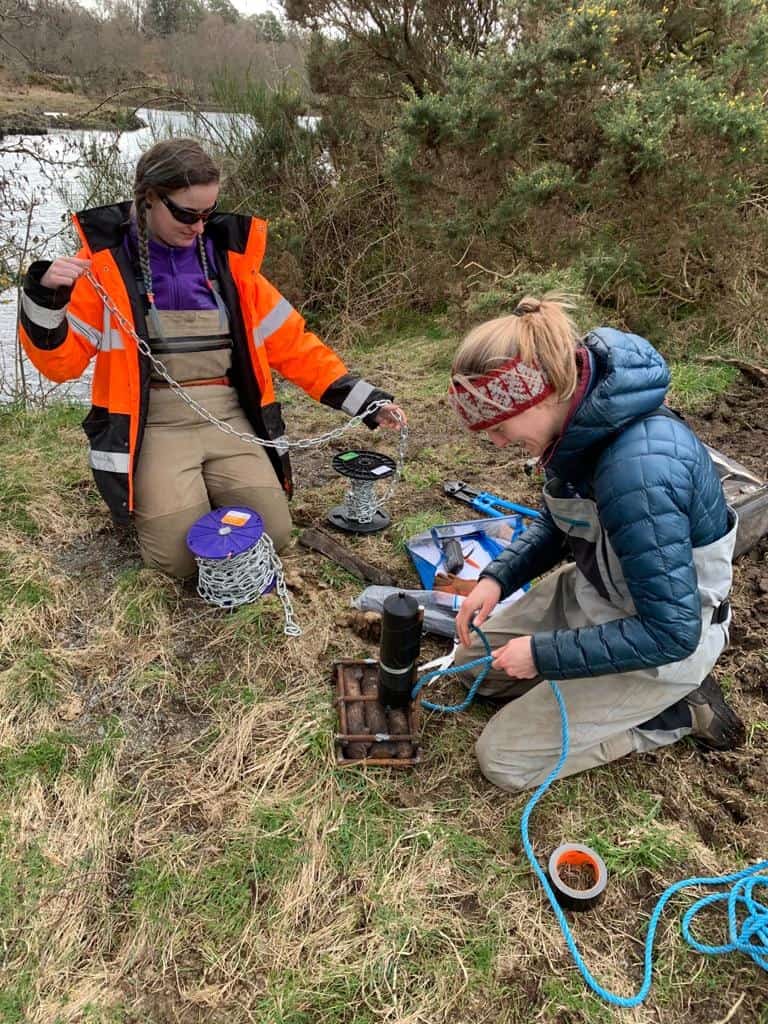The global population of wild Atlantic salmon continue to decrease, with research highlighting a range of suggested impacts and reasons, including our changing climate and the impact of humans on our freshwater and oceanic systems.
The Atlantic salmon has a complex life cycle in the wild, migrating from freshwater to the sea when approximately two years old (known as ‘smolts’), and then back again as adults for spawning. As the smolts migrate out to sea, they often encounter a range of human-induced challenges, such as poor water quality, habitat fragmentation and barriers.
This week sees the start of an innovative project in the River Dee in Kirkcudbrightshire, using recent advances in acoustic telemetry to ‘track’ progress of the smolts down the river towards the sea. The Kirkcudbrightshire Dee, approximately 1,000km2 in size, runs from the Galloway Hills, the core of the UNESCO Biosphere, through the Galloway Forest Park and reaches the sea at Kirkcudbright. The river catchment hosts a variety of challenges for migrating species, including the Galloway Hydro-Electric Scheme.
Galloway Fisheries Trust (GFT), a local environmental charity focussed on enhancing the ecology of local freshwaters, are leading on work to tag up to 50 Atlantic salmon smolts before they start their journey. As each of the tagged fish pass a series of 16 bankside receivers, they will ‘ping’ the receiver, transmitting the time, location and also confirmation of which individual is passing.
Supported by the Atlantic Salmon Trust (AST), GFT aims to capture and tag a total of 50 smolts during their 4-6 week migration window (April/May) using a combination of fyke nets, rotary screw trap and electrofishing. Smolts should have completed their migration by the end of July (depending on temperature and water flow), which is when all in-stream equipment will be removed, and data analysed.
The 16 regularly spaced bank side receivers will be placed at locations which are less than 300m wide to ensure each fish is detected.
Findings from this project will increase understanding of:
- the impact of standing waters on smolt migration
- the success of smolts migrating past barriers
- the potential influence of predators on smolt survival
- whether smolts successfully reach the sea
- whether there are any major bottlenecks of smolts along their journey to sea
- the speed and directionality of migration.
This project is one of the first in South-West Scotland to use acoustic telemetry to understand migratory patterns of Atlantic salmon smolts as they migrate out to sea. Numbers of Atlantic salmon in the (Kirkcudbrightshire) River Dee are still declining, but results from this study will allow areas of concern for smolt migration to be identified, prioritise targeted management actions and hopefully improve the status of Atlantic salmon in this heavily impacted river system.
The project is being led by Dr Samantha Beck from Galloway Fisheries Trust. Sam said:
“As smolts prepare for their migration downstream, they undergo dramatic changes in their physiology, behaviour and morphology, so that they are able to cope with conditions at sea. Any delays in their timing of sea entry may be critical to their chances of survival. This project will allow us to target areas of concern for management and maximise the chances of smolts reaching the sea on time, whilst also potentially increasing the number of adults returning to spawn in subsequent years. We would like to thank our funders (Drax, Galloway Glens and the Dee District Salmon Fishery Board) and AST/University of Glasgow, as well as the landowners for being able to make this project happen.”
The project is being supported by Drax, the owners of the Galloway Hydro Scheme. Stuart Ferns, Drax’s Galloway Hydro Scheme Operations Manager, said: “The Galloway Hydro Scheme has played a vital and positive role in helping sustain the region’s iconic Atlantic salmon population in recent years. Drax is delighted to support this exciting new project that will go on to help boost salmon numbers on the River Dee.”
The project is also being supported by the Dee District Salmon Fishery Board. Chairman, Jamie Ingall, added:
“This is an important piece of work which should enable us to better understand the many threats and obstacles that young salmon face on their return to the sea. We are grateful to all those who have contributed funding to allow this project to go ahead.”
The work forms part of the wider Galloway Glens Scheme. Nick Chisholm, Galloway Glens Project Officer, said:
“Salmon is an iconic species that symbolises wilderness, health and vitality, but they also live in an anthropologically challenged environment. To ensure their survival we must understand what those challenges are and how we can help them overcome them. This study by Galloway Fisheries Trust will help us to improve this understanding, leading on to solutions that we can be implemented for the salmon’s benefit. The Galloway Glens Scheme, using our funds from the National Lottery Heritage Fund, are delighted to be supporting this project.”






